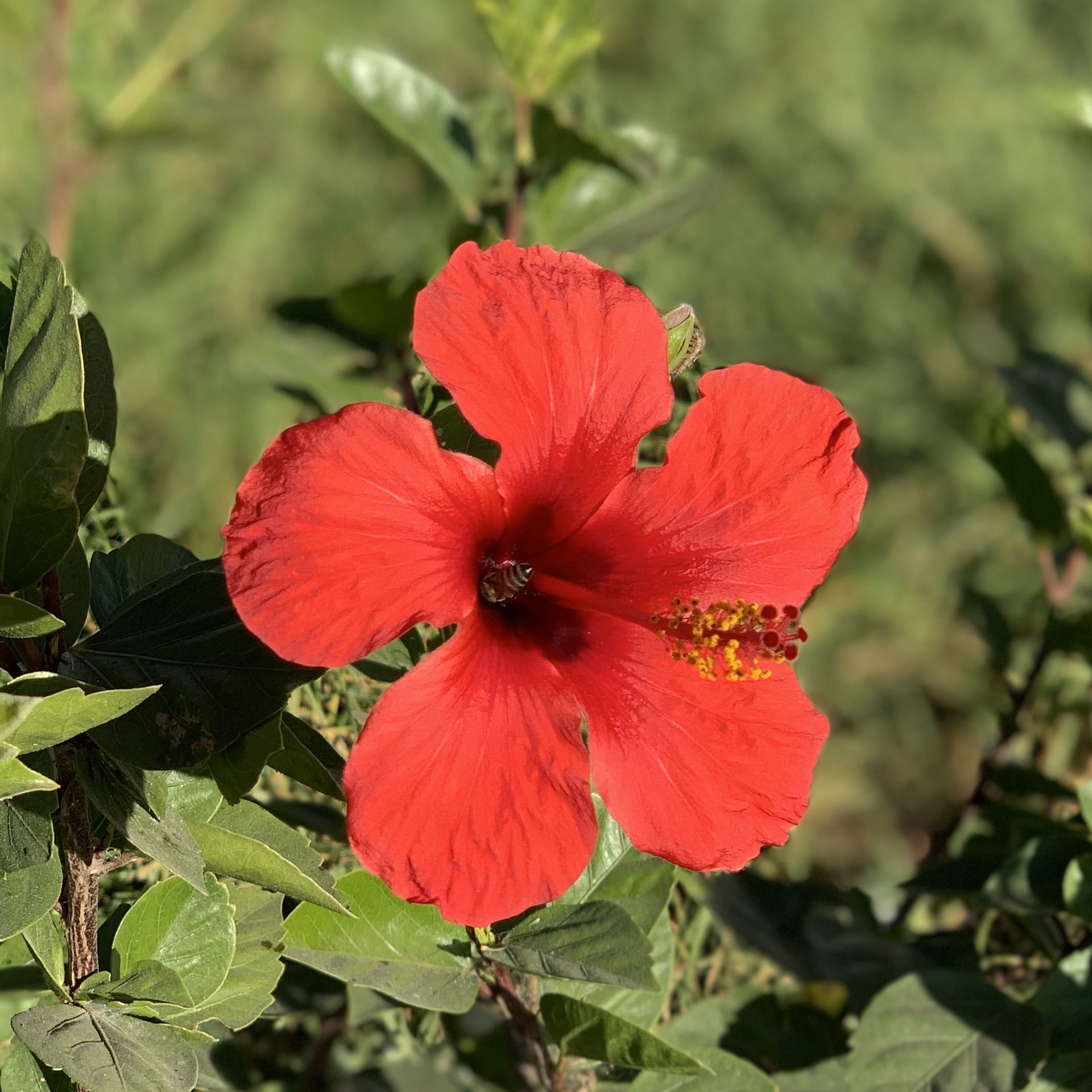Hibiscus
Hibiscus is a flowering plant genus of the Malvaceae family. The genus is very broad, with hundreds of species native to warm temperate, subtropical, and tropical regions around the world. Member species are well-known for their huge, showy flowers, and are commonly referred to as “hibiscus” or, less commonly, “rose mallow.”

- The genus contains herbaceous plants that are both annual and perennial, as well as woody shrubs and small trees.
- There are approximately 220 different species of hibiscus in the world, each with its own scale, form, and colour.
- Hibiscus is endemic to mild temperate and tropical climates. It grows well in wet or swampy environments.
- The leaves are alternate, ovate to lanceolate, and sometimes toothed or lobed on the margin.
- Hibiscus flowers are well-known for their huge, showy blooms. The flowers are large, prominent, trumpet-shaped, with five or six petals that vary in color from white to pink, red, orange, peach, yellow, or purple, and range in width from 4 to 18 cm (1.6 to 7 in).
- At maturity, the fruit is a dry five-lobed capsule with multiple seeds in each lobe that are released when the capsule dehisces (splits open). It is red and white in hue.
- Hibiscus plants have significant biological, decorative, nutritional, and medicinal benefits.
- The most popular and noticeable use for hibiscus flowers is as a decoration.
- Many species are cultivated for their showy flowers or as garden shrubs, attracting butterflies, bees, and hummingbirds.
- The broad hibiscus flowers give nectar to pollinators, which is beneficial to the ecosystem.
- Around the world, hibiscus flower tea is known by several different names and is served both hot and cold. The cocktail is well-known for its bright red color and tart flavor. It contains a lot of vitamin C, minerals, and antioxidants.

